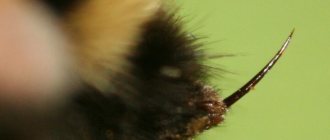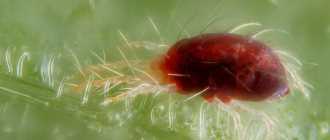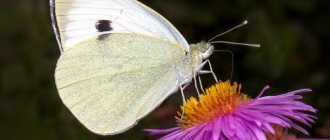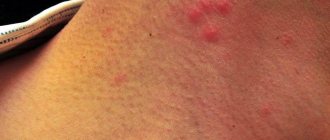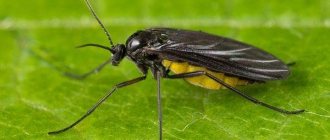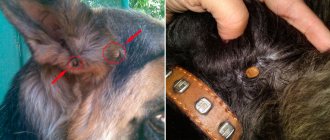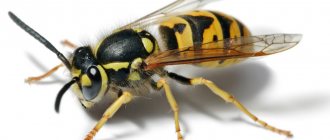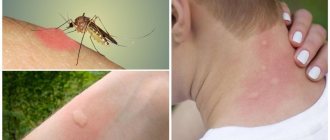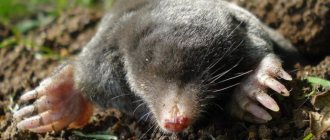Scientists are very obsessive people and often experiment on themselves. Briton John Haldane broke his spine to study the overload experienced by submariners. Russian scientist Ilya Mechnikov deliberately infected himself with typhus, and his colleague Nikolai Gamaleya drank a cocktail of cholera pathogens. American biologist Justin Schmidt has experienced the bites of more than 150 species of insects, and has compiled his own sting strength scale. Referring to the Schmidt scale data, our short review presents the most painful stinging insects in ascending order of pain level.
11
Sweet bee
In Russian, such bees were given the name “sweat”, as they are attracted by the aroma of salt in human sweat. The most numerous is the Halictidae family, numbering more than 3,500 species.
They often attack people, especially those who want to brush them off. The bee takes hand waves as a sign of aggression towards itself. In terms of bite strength, with an indicator of “1.0” it is at the lowest level.
Schmidt compared the stings of these bees to a small charge of electricity connected to every hair on the body.
10
Fire ants
The bites of the Solenopsis invicta species (red fire ants) are especially painful. The bite is comparable to a burn, which is why this type of ant is nicknamed fire ants.
The entomologist, giving a score of 1.2, called the bite sudden and sharp, but not irritating. Pain occurs when the poison solenopsin is injected, which causes redness at the site of the bite.
For people with weak immunity and increased allegorical reactions, small insects can pose a mortal danger.
9
Acacia ants / Acacia ant
Ants living on trees and shrubs belong to the large genus Pseudomyrmex. Found in Central and South America. The second species name is Bullhorn acacia ant.
They prefer to settle on acacia trees, as its juice protects them from natural enemies. The bite, rated 1.8 on the Schmidt scale, is quite painful.
Those who have encountered ants say that the bite is pinpoint, accompanied by piercing pain. It feels as if the body has been pierced with a sharp needle or squeezed between the two surfaces of a stapler.
8
Dolichovespula maculata
Because of its appearance, the annoying insect is also called the White-faced Hornet. There are clearly visible white spots on the insect's head. Lives in the Northern Hemisphere of the planet. In America they are called yellow-jackets, and there are 18 species in total on the planet.
It makes its paper nests near human habitation, and often aggressively defends them with its entire flock. The bite is painful, intense, accompanied by a burning sensation and needle-like pain.
A wasp from the genus Dolichovespula is firmly entrenched in the top ten painfully stinging insects with a score of 2.0 points.
How to understand whether the sting remains in the human body after a wasp sting
Wasp sting - how to remove it
People unfamiliar with the characteristics of stinging insects often believe that after a bite the wasp left a sting. It happens that insects are simply confused - a wasp and a bee of a certain breed may be similar in appearance. So, after a wasp bites, does its sting remain in the human body? The answer is clear - no, the sting of a wasp is designed in such a way that it can sting and inject poison an unlimited number of times throughout its life and not die after its first and last sting, as happens with a bee.
Wasp nest in the attic of a house
The bite site always swells very much, turns red, and hurts. The pain is usually severe and burning. It is necessary to understand that if a wasp has bitten, there is no sting in the wound.
Social wasps / Vespinae
The large subfamily of Foldoptera is distinguished by the complex social organization of its colonies and the bizarre architectural forms of its nests.
The bite is painful, burning, as if a cigarette is being put out on the body. Particularly dangerous for people with allergies. On the Schmidt scale, 2.0 points, but according to those who encountered wasps in childhood, it is much higher.
These insects have a rather aggressive disposition, and they are able to defend themselves and their home by stabbing their sharp sting into the body several times.
6
Third place - Hornets
Hornet
A bee or wasp sting is painful, but deaths are rare and are associated primarily with allergies or mass insect attacks. Hornets are more dangerous - especially the giant Asian hornet, which lives in Primorye. Hornets readily attack bees and feed them to their larvae; they are aggressive creatures that will attack humans if disturbed.
Insect venom contains neurotoxins and substances that destroy tissue. It causes severe anaphylactic shock, and the outcome of the encounter can be death. Hornets act both alone and in groups. A person stung several times receives a large dose of toxic substances, which leads to serious consequences for the body. Every year, about 300 people die from encounters with these insects. Insects could be put in first place, but encounters with them do not occur very often. But every year their habitat is expanding, this is due to global warming. And the risk of meeting increases.
Interesting: Can a bumblebee bite?
Honey bee / Apis mellifera
A beneficial insect that has been used by humans since ancient times to produce honey and wax. But they bite quite painfully. The bite site immediately turns red and there is a slight swelling.
The strength of the bite is rated at 2.0 points, and the pain is comparable to a severe burn. After stinging, the bee dies as it leaves a sting in the victim's body.
Many people volunteer to be bitten, as it is believed that this is an excellent remedy for radiculitis.
5
Postal wasp
Postal wasp
If it is unbearably hot outside, or you are simply doing physical labor in the lap of nature, then be prepared to become a victim of the postal wasp. This winged nipper is attracted precisely by the salt contained in human sweat. When this insect stings, a sharp pain immediately occurs, as if you were struck by an electric current. According to Professor Schmidt's scale, such a bite scores one point. Not too much, right? But it hurts a lot!
Hornet/Vespa
The largest representative of the genus Vespa mandarinia grows up to 5.5 cm, and in addition, all species are equipped with a sharp sting. Hornets have spread throughout all regions of the Northern Hemisphere, except for the Far North.
By thrusting their sting, they release venom that contains acetylcholine. Because of this, the sting of these flying insects is more painful than that of ordinary wasps. On the pain scale it is rated at 2 points. Can bite several times in a row during one attack.
The poison, when it enters the body, causes allergies, and a person can die from anaphylactic shock if medical assistance is not provided in a timely manner.
By the way, on our website most-beauty.ru there is an interesting article about the most poisonous and dangerous insects in Australia.
4
Domestic insect bites on humans: photo
Some insects that live in homes only bite depending on the species or are capable of causing damage that can be mistaken for bites, however, they are also worth mentioning. A description of what the bites of these domestic insects look like on humans and their photos are given below.
Carnivorous midges
- How sensitive a midge bite is depends on the type of insect.
- When biting, midges literally tear out pieces of skin, so the wounds look like rounded dots with torn edges about 0.1–1 millimeters in size.
- Midges bite once and to any part of the body, but there can be many bites due to the large number of insects.
- An allergy may occur to midge bites, in which case the area swells and turns red in a radius around the bite.
Cockroaches
- Cockroaches can bite, but they do this mainly when there is a lack of other food.
- Cockroaches eat only skin and are not interested in blood, so bites look like peeling skin or are completely unnoticeable.
- They bite children all over their bodies, adults mainly on the lips, eyelids, and facial skin.
- This type of contact with cockroaches can cause an allergic reaction on the skin.
earwigs
- Earwigs do not bite in the literal sense of the word, but bites are taken to be their attempts at self-defense with the help of a forked tail, similar to pincers.
- The insect attacks only if its own life is threatened.
- The bite appears as two red dots about 1 millimeter apart, or as a small scratch with jagged edges if you brush the insect off before it releases.
- The bite is quite painful, but otherwise no different from a regular scratch.
Reactions to bites can vary in intensity, so if you feel unwell and suspect that it may be related to insect bites, seek medical help.
Any symptoms and diseases are eliminated more easily in the initial stages. If you do not want to figure out on your own the question of who bites in the apartment, you can contact the SES. Experts will determine for you what kind of insects you have and will offer the best option for exterminating them.
Calculator
Red American Reaper Ant / Pogonomyrmex barbatus
The inhabitant of the forests of North America has one of the most powerful poisons among all insects on the planet. The sting force according to the Schmidt Sting Pain Index is 3 points.
Highly organized ants create colonies with up to 12 thousand families. They are omnivores. And in addition to plant food, they happily hunt other insects, amphibians and mammals. They hunt in large groups, jointly attacking the prey.
The bite is doubly painful because the harvester ant first bites with its powerful jaws and then inserts a sharp sting that is hidden in the abdomen.
3
Paper wasps
The most numerous and extensive subfamily in the family of social wasps, including 25 genera and more than 800 species. Some are distinguished by primitive behavior, and some are highly organized.
Both of them sting painfully, and on the scale their bite is rated at 3.0 points. The sting is released, and a burning pain is felt followed by numbness at the site of the bite.
In primitive animals, a nest of 15–20 individuals is formed around one female. Sometimes nests contain up to 100 individuals. Such paper wasps are also found in Russia, but fortunately, they do not sting as often as their relatives on the North American continent.
Red Reaper Ant: 3.0
0
The red harvester ant provides a great service to farmers as it eats many pests. These ants have a nearly square head with a relatively long body without a spine, and their reddish-orange color distinguishes them from other ant species. The positive thing is that they attack rather reluctantly, although they do have a painful sting. Schmidt describes the sting from these ants as bold and relentless, and the bite feels like drilling out an ingrown toenail. According to the pain index, the pain of a red harvester ant bite is 3.0.
Wasps of the genus Pepsis
Hunters of tarantulas, such wasps have settled throughout the planet, and grow up to 5.4 cm in length. The wasp received its species name due to the fact that it often hunts dangerous arachnids.
Those who have encountered bites say that it is a fierce, blinding pain, as if the body was electrocuted. Schmidt rated this pain at 4.0 points. They have a thick, sharp sting that leaves a mark on the body.
A fairly strong insect that can easily cope with large tarantulas and other spiders that are much larger in size.
1
Wasps
The annoying striped creatures become most active in late summer and early autumn. Wasps fly en masse near ripe, rotten, fermented fruits, meat, fish, and drinks. Adults feed on juices, while larvae are fed protein foods.
They rush to attack if their own life is in danger, but they can regard any sudden human movement as a threat. Unlike bees, they do not leave stings and are able to bite several times at once. Wounds from wasp stings become swollen and inflamed. Allergies often develop with a deterioration in general well-being. The most dangerous bites are on the face, neck, and larynx.
Consequences of insect bites:
- swelling;
- redness and thickening;
- holes remain in the body where the wasp stuck its sting;
- pain, burning;
- edema.
In young children and people with an increased tendency to allergies, the temperature from an insect bite increases, weakness, nausea, abdominal pain, etc. are observed. With a normal reaction to insects, the pain goes away within 3 days, the skin is restored within a week.
Wasp sting
Important!
If a child's leg is swollen after an insect bite, you need to apply a cold compress and monitor his well-being for 20 minutes. The appearance of other alarming symptoms is a sign of a severe allergy.
Tropical Bullet Ant / Paraponera clavata
First on our list of powerfully stinging insects on most-beauty is a large ant that lives in the tropical forests of South America. In English they are called Bullet ant, and on the pain scale they have the highest level of painful sting of 4.0+.
In addition, they have poison. Adults grow up to 2.5 cm, with a sting length of 3.5 mm. A highly organized and aggressive insect. Everyone in the colony has their own role, and the ant strictly adheres to it all its life. They attack the victim in a group.
Some Indian tribes use them in an elaborate initiation rite where young men wear gloves filled with painfully stinging ants. Michael Smith's body map of pain.
PS
Executioner wasp
This rare species of wasp, native to Central and South America, despite the fact that it is not included in the Schmidt scale, has perhaps the strongest bite among insects.
Popular nature blogger Coyote Peterson became famous for testing many insect bites on himself to determine which ones stung the most. So, on one of his expeditions, he experienced the terrifying sting of the executioner wasp.
If you want to take a look at this, watch this fascinating video:
For those who haven’t looked, let’s say that the sting of this wasp turned out to be the most painful. In addition, the severe pain after the bite lasted for several hours. The effect of the poison lasted about a week.
A bee's sting: appearance, location
The bee sting is a special organ, essentially being a modified ovipositor. That is why it is completely absent in drones. The structural features of an organ can only be examined using a microscope. It has a complex structure, externally resembling a sharp long needle with a very thin base. Small notches are clearly visible on both sides, with their sharp tips directed towards the base. It should be noted that in worker bees the number of such notches is 10, while in the queen bee it is only 4.
A bee sting includes several main elements:
- three chitinous parts with plates;
- middle part: represented by a sled, widened in front and narrowed in back;
- stylet: it consists of two lancet needles, which are located in the hollow of the sled from below. During the bite, the stylet breaks and releases the needle.
Moreover, each of the elements has its own unique purpose. The stiletto allows you to pierce the skin. In the middle of the sled there is a poisonous gland, consisting of a bladder and a thread-like lobe. A toxic substance is formed in the reservoir bubble, which is injected under the skin. The bee's sting is located at the tip of the insect's abdomen.
The bee has a flexible and well-developed abdomen, so it always bites accurately, quickly and directly to the target. With the help of barbs, the needle penetrates deep into the enemy's body. However, after stinging, the bee itself is left with an open wound, since part of the abdomen is torn off along with the sting. As a result, after one bite the insect overtakes death.
Anemone flower: types, beneficial and medicinal properties, contraindications, use in medicine. Anemone tincture and its use: recipes
Bottom line
In addition to the insect sting pain scale that Schmidt compiled, another American, Michael Smith, identified the most painful points on the human body. Here, the honey bee was chosen as the experimental instrument.
The most painful thing a bee stings is a person's nostril. Smith estimated this indicator at 9.0 points. In second place is the upper lip. A bite to this area on the face is 8.7 points. The most painless areas of the bites were the human skull and the very tip of the middle toe. Only 2.3 points.
In conclusion, we note that the world and the scientific community did not appreciate the impulses of the American naturalist and brave entomologist. In 2015 he was awarded the Ig Nobel Prize. Michael Smith was also awarded the same award. Justin Schmidt was born in 1947 and now has more than a thousand bites from various types of insects, and in his scale he described the bites of 83 types of insects. But no matter what experiments scientists encourage themselves to undertake, be careful in urban areas and in nature.

